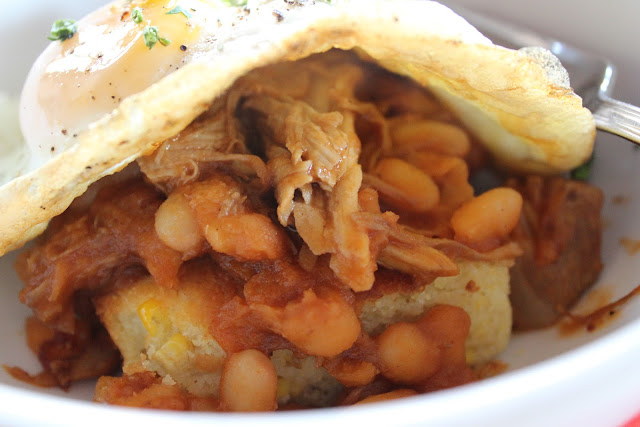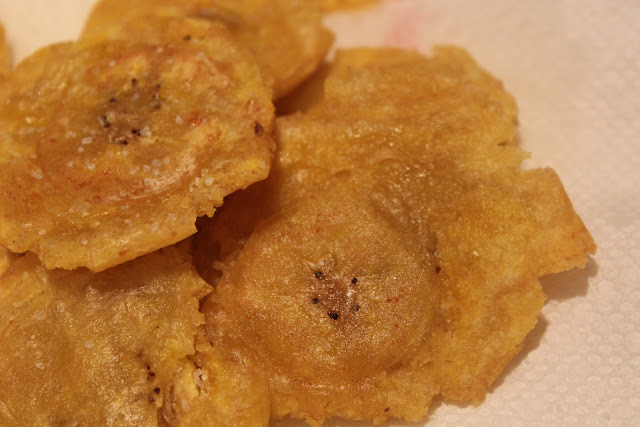 |
| RER 8.26.12 |
 |
| JAR 8.26.12 |
Sometimes, things deserve a second chance, like that shirt
that did not look great the first time you wore it, or that brownie recipe that
did not come out just right. Sometimes you should forget the first impression,
and maybe try again. You know the expression “first is the worst, second is the
best…” We tend to hope for that when first really is the worst.
This is what happened with two restaurants, I had already
tried in Jersey City. I decided; why not
try them again, maybe this time would be better. Oh boy, was I wrong.
Because this time second was not the best by far… it may have been the worst.
Check out the first’s on yelp; MAE and HARD GROVE.
***
MAE:
We tried again, but this time for brunch, after hearing that
brunch would be better. I have heard so many good (enough) things about Modern
American Eatery, located in a changing area of Jersey City. I have been told,
almost countless times about the experience that is MAE; about the young chef
and the atmosphere and the reasonably priced food. But this is not what we
experienced, unfortunately… again.
So we took a chance, hungry, minds open, trying to forget
our last not-so-great experience at the newish restaurant. It was Sunday
brunch, just passed noon, a church was having a fundraiser for back to school,
and it was definitely time to eat.
The brunch menu is great; though it is not endless there are
two prix fixe brunches at two different price points ($12 and $15). After
looking at the menu our food decisions were almost automatic; crabcake benedict
and a pulled pork and egg dealie. We were excited, the dishes sounded
scrumptious and the coffee that we just got was delicious.
We got our juices that accompany the prix fixe and we were
sipping our coffee, laughing, chatting, starving. Looking around, the
restaurant was not very full, just a few tables occupied around us, but
throughout our drawn out meal it grew more crowded. We were definitely having a
good time, enjoying our company and making predictions.
Unfortunately, after the staggeringly long wait for our
food, and being moderately forgotten by our waitress, the food was brutally
disappointing. The hash browns that came with my benedict were stone cold, like
they hadn’t been warm for a very long time. This severe chill made the hash browns
dry and difficult to eat, on top of their lack of flavor. Also one of my pretty
poached eggs was way over cooked while the other was a perfect runny texture.
The other dish, the pulled pork topped by a fried egg on top of a fat layer of
cornbread, was steaming hot. There too was yet another over cooked egg, which
was unfortunate because a wet yolk would have been really lovely with the sweet
spicy bbq of the pork and the cake like corn bread.
What made it the worst was all the waiting. We waited and
waited for our meal. The coffee was pretty prompt, though on our second refill
the pot ran out, and we had to wait (more waiting) for our cups to be filled.
The restaurant was not full, there was no reason for our wait to be so extreme,
and parts of our food to be cold or cooked incorrectly.
This here is an issue of quality control; looking at the
plates being sent out and each element on it. Food should not come to the table
cold. That is negligence of the server or the cook, and it makes the meal less
delicious and more unfortunate.
But the coffee was great.
***
Hard Grove:
Like the last time, our trip to Hard Grove in Jersey City
was a little jumbled and confused. Our first trip together was late and we had
difficulties with our waitress and our requests. I was hoping that it was just
that one time. We tried to come a little earlier for our second try.
The second time, the “second is the best” time, we were told
we could sit anywhere, but after getting comfortable on our extremely high
chairs and looking over the menu, we were asked to move. Somehow there was a
lack of communication between the wait staff, which resulted us in having to
adjust. No biggie, just the live music was coming in and that was the spot
where they had to set up. With the intelligence that there was going to be live
music inside the restaurant, we deftly decided that sitting outside would be
less loud and riotous.
Once outside, we sat at a table, which was too small and
less than comfortable because the chairs and also there was a hot air vent or
something right near us. We got asked yet another time if we wanted to move.
This time it was welcomed. Our last table, still outside was the final stop,
still too small and less than comfortable, but oh well.
Maybe it was a busy night and we were too hungry, but it
felt like we were begging for attention the whole meal. Our server, one of many
it felt like, would be standing in front of us, trying to talk to us, but the
whole time he would be surveying the other tables. This ended up with him
forgetting tid bits of what we asked for, or making superfluous trips, because
we did not have his full attention. This makes sense, it was busy, but in the
end it did not result in a favorable experience with Hard Grove.
On top of that, the food was worse than it had been the last
time we ventured there for a Cuban feast. Even things we had ordered before
slipped in quality and flavor. Hard Grove, unfortunately, appears to have no
consistency in the food and the quality control. The only thing that remained
constant, was a long drawn out meal, when it didn’t have to be, and high strung
or absent servers.
And there is only one bathroom for a bar and a restaurant,
obvi not enough.
***
We all hope that that second chance is the redeeming chance,
the “second is the best.” But unfortunately, that doesn’t always happen. And
when it doesn’t that really gives insight into whatever it is. In this case, it
really just tells me that both MAE and Hard Grove have things they need to
improve on.
MAE is still a newish restaurant. It needs to get settled
and fully define its niche. Things like that take a while and it is
understanding that the beginnings are a little bumpy. Just unfortunately, it
leaves a bad taste in the mouth, and relies on people’s willingness for second
(or even third) chances. I really hope MAE improves, because I think it could
be a really cool place and could be successful. They really are different, breaking new
ground in new territory.
Hard Grove, on the other hand is another kind of monster.
This restaurant is not new in the slightest. I have late childhood and early
teenage memories there; having lunch with my mom etc. Perhaps it was the times
that we decided to eat there, meaning, later at night Hard Grove becomes a hang
out; live music, extensive list of drinks, large appetizers. I know I have
already been twice with not much success, but I would go for a third visit, at
a different time or day, just to see if Hard Grove is consistently
inconsistent.
Maybe I should go for “third is the one with the treasure
(or hairy, depending) chest.”
RER
9.28.12
 |
| RER 8.31.12 |
 |
| RER 8.31.12 |


















